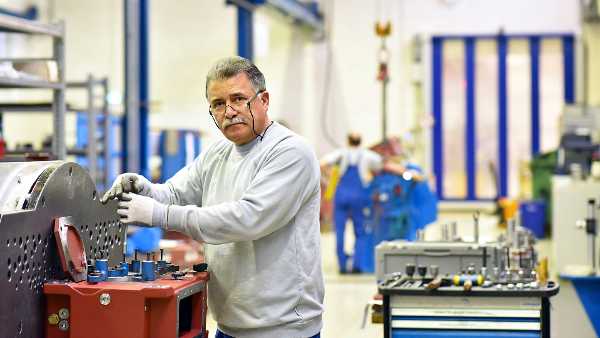The new Pension Act: What do you need to do as an employer?

- Background
- 19 April 2023
- Edited 10 September 2025
- 2 min
- Managing and growing
- Staff, Rules and laws
The new Pension Act makes it mandatory for employers, employees and pension funds to reach new agreements. Does your company not have a collective labour agreement (CAO)? Then you must take action.
SBI codes have changed
Many SBI codes were updated in September 2025. Please check whether the description of your business activities is still correct.
The pension that employees grow while at your business will change under the new pension act (2023). Employees accrue this supplementary pension as additional income on top of the basic pension that pensioners receive from the government: the General Old Age Pensions Act (AOW).
A pension provider is a pension fund or insurer that ensures that employees and employers save pension money together. The employer pays the largest part of the contribution. A smaller part of the contribution is deducted by the employer from the employee's salary each month.
Pension providers have until 1 January 2027 to make new agreements with employers and employees and to implement those agreements. They may be given an extra year to do so. This extension still has to be approved by the Houe of Representatives and Senate in the Dutch Parliament.
This changes for employers
The Pension Act will change the agreements with your employees. What exactly you need to do depends on whether you are affiliated with a collective labour (CAO) and whether a pension is mandatory.
Is a pension compulsory?
Not all types of companies and organisations are obliged to offer their employees a supplementary pension. Are you affiliated with a CAO or an industry pension fund, such as for the catering industry or construction industry? Then it is compulsory, no matter how small your company or organisation is.
Affiliated with a CAO
If your business or organisation is affiliated with a CAO, you do not need to do anything for the time being. Trade unions and pension providers are making new pension agreements. Your employees will then receive information about this. Your role in this depends on the new agreements.
Not affiliated with a CAO
Is your business or organisation not affiliated with a CAO? Then you must make agreements yourself with your employees and pension provider. You must then have these new agreements recorded in the pension agreements with the pension provider. For example, you will need to consider how your provider will invest the contributions and whether you will opt for a transitional arrangement.
Transitional arrangement
Together with your staff representatives or works council, you determine, among other things, whether employees immediately make use of the new pension agreements or a transitional arrangement. With the transitional arrangement, the old pension agreements continue to apply to your current employee. New employees who join the company are covered by the new pension agreements.
Premiums and investments
You also have to think about the pension scheme itself. For example, what part of the premium do you withhold from the salary? You also determine how the pension provider invests the premium: for each employee separately or for all your employees together.
You also make agreements with the pension fund about how much risk they take when investing. You can take the age of your employees into account, among other things.
Find help
Do you need help? Read the information on the Werken aan ons pensioen website (Working on our Pension, website in Dutch) and talk to a pension adviser.
What changes for employees
Due to the new act, pension benefits move with the economy. If the economy is doing well, the pension will increase. If things go less well, the pension will decrease. Measures must prevent pension benefits from falling too quickly.
Your employees receive an overview of the investment results every year. This states what this is expected to mean for the amount of their pension benefit. Pension providers are no longer allowed to make promises about the amount of that benefit in the long term.
Each employee receives their own pension pot, making it easy to see how much pension they have accrued. This should put an end to employees who have multiple pots because they have built up pensions with different employers and providers.
In addition to the pension for your employees, it is also wise to think about your own pension.


